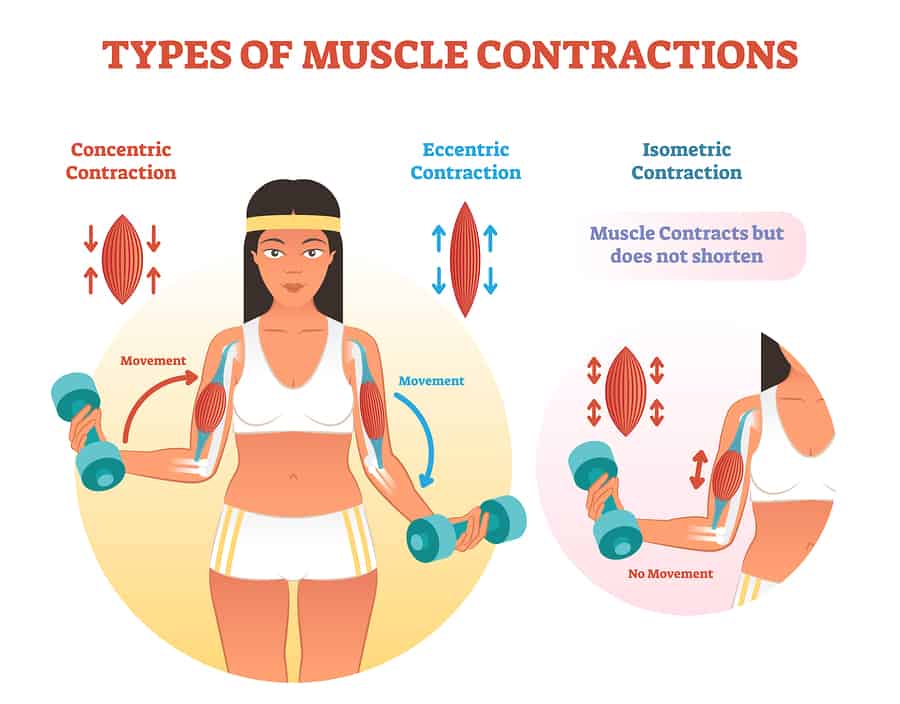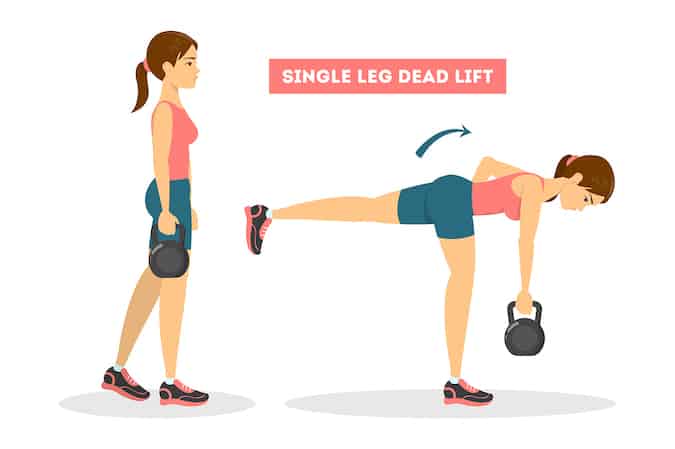This post may contain affiliate links. If you click through a link and make a purchase, I may receive a commission at no additional cost to you. As an Amazon Associate, I earn from qualifying purchases. Read the full disclosure here.
Fitness terms can get confusing, especially when you first set out on a fitness journey. There’s tons of new lingo to learn and it can be overwhelming!
The idea for this post came to me in the middle of a Body Pump class. As do many of my writing ideas.
Instructors often make reference to different types of muscle contractions during the workout, with little to no explanation, leaving newbies to fend for themselves. In this case, the instructor was hyperfocused on repeating the word “eccentric.”
So I began to wonder, how many in the class aren’t sure what that is?
Now it’s not necessarily the fault of the instructor, they aren’t required to give you a full dissertation on each word. But I encourage you to learn as much as you can about your fitness activities to get the most out of your workouts and prevent injuries.
Plus, it’s no fun to awkwardly smile and nod when you have no idea what someone just said. Don’t let the lingo bring you down! Strengthen your fitness vocabulary and get the most out of your workout!
When you’re working out, it’s important to understand why you’re doing what you’re doing, instead of just mindlessly going through the motions.
This post focuses on three types of muscle contractions: concentric vs. eccentric vs. isometric – and why you should care.
Disclaimer: This content is for educational purposes and is not medical advice. Read the full disclaimer.
Skeletal muscle anatomy
Muscles are made of soft tissue, arranged in fibers, that contract (shorten) and relax (lengthen) to produce movements.
Tendons connect muscle to bone. Tendons have receptors that communicate with the brain and spinal cord to relay information. They produce movement by telling the muscle to contract or relax.
Muscles have fixed endpoints. There is only so much length to contract and relax. This is important to explain these three types of muscle contractions. (And why workouts can’t really lengthen your muscles.)
Related Read: Anatomy For Exercise – Lower Body Muscles

What is a concentric muscle contraction?
Concentric contractions are often the easiest muscle movements to conceptualize.
During concentric movement or the concentric phase of an exercise, the muscle shortens when the fibers overlap, and the two endpoints move closer together.
The most simple example is a concentric contraction of the biceps muscle. When you bend your elbow and bring your hand close to your shoulder, you are performing a concentric contraction of the biceps. In weight training, this would be the concentric phase of a biceps curl.
Related read: A Tour of Strength Training Equipment For Beginners
Concentric vs. eccentric muscle contractions
When a muscle is loaded while lengthening and controlling a movement, this is an eccentric contraction.
Using the same example from the biceps, controlling the lowering of your hand (or weight) from your shoulder would be an eccentric contraction of the biceps or eccentric phase of a biceps curl exercise.
Eccentric training can help improve functional strength, which mimics the demands of real-life activities. Eccentrics are also useful in the treatment of tendinopathy by reducing the load on the tendon.
Most resistance exercises have a concentric phase and an eccentric phase and it’s possible to focus on both types of muscle contractions within one exercise session.
Where most people go wrong is when they move too quickly through a resistance exercise and end up using gravity and momentum to accomplish movements. Remember to go slow to maximum results from strength training exercises.
Fun facts about eccentric contractions
If you look up the definition of eccentric, the pronunciation sounds like IK-cen-trick, such as when referring to a personality trait. However, in the medical and fitness world, you will almost always hear it pronounced like EE-sen-trick when referring to muscle contractions.
Go ahead, google a few videos and see.
I can’t actually find a dictionary supporting this version, so you might just have to accept it, like how everyone says coupon differently. I did find full-blown arguments in online forums over it though. Someone in science may have forgotten to contact the dictionaries…

What is an isometric muscle contraction?
A muscle contracts isometrically while holding a static position.
Back to the biceps example, holding a tray would demonstrate an isometric contraction of the biceps. You are engaging the muscle, but there is no change in range of motion. Planks are another example of isometrics on a full-body scale.
More complex or compound movements (for example a squat where multiple joints and muscle groups are involved) will have components of all three throughout the body at various points during the movement.
Although isometrics sound easy, some people have great difficulty performing them, especially when asked to isometrically contract a muscle on demand, say an abdominal brace.
Isometrics can be great for improving body awareness and decreasing stress because they require you to isolate your focus on one muscle and engage it without moving. Isometric contractions can help build a mind-body connection.
Isometric muscle contractions also play a role in stabilization. The Bar Method, one of my favorite fitness classes, focuses a lot on isometrics. If you think isometrics are easy, try a Bar Method class and enjoy your soreness the next day!
What does isotonic mean?
Isotonic is sometimes confused with isometric, however they mean very different things.
An isotonic muscle contraction can occur during an eccentric movement or a concentric movement. Isotonic means that the force remains constant throughout the movement as the muscle length changes.
Why are different types of muscle contractions important?
Studies show focusing on different types of muscle contractions during weight training could lead to improved muscle function and support for functional activities. Varying your resistance training can help prevent injuries.
And…
It’s essential to understand why you’re doing what you’re doing to get the most out of your workout and avoid injury.
If you’re bored with the same old routine or have trouble coming up with motivating strength exercises, give these highly rated fitness apps a try!
You might also like:
- Anatomy for Exercise | Lower Body Muscles
- How to Stretch the Right Way
- The Complete Guide to Upper Body Muscles for Beginners
- Beginner Friendly Guide to Strength Training Equipment
featured image credit: Maridav / bigstockphoto.com
References
Cowell, John F. MS; Cronin, John PhD; Brughelli, Matt PhD Eccentric Muscle Actions and How the Strength and Conditioning Specialist Might Use Them for a Variety of Purposes, Strength and Conditioning Journal: June 2012 – Volume 34 – Issue 3 – p 33-48
doi: 10.1519/SSC.0b013e318253f578
O’Neill S, Watson PJ, Barry S. WHY ARE ECCENTRIC EXERCISES EFFECTIVE FOR ACHILLES TENDINOPATHY?. Int J Sports Phys Ther. 2015;10(4):552‐562.







I will have to read this several times to anchor info in my head. You write so well and translate very scientific concepts into terms the layman can understand. Kudos
Thank you so much for taking the time to read and comment!